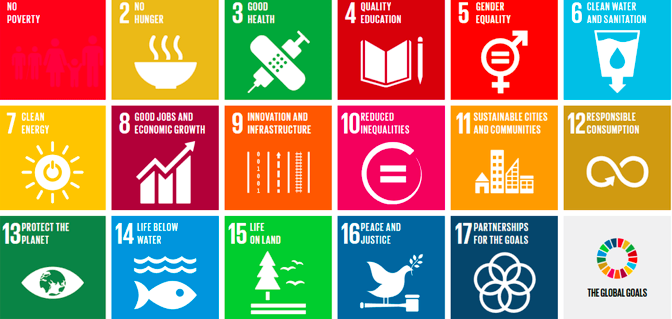The Belt and Road can become a pathway for Sustainable Development
In a century in which population is expected to peak, societal inequalities continue to rise, resources become scarcer and the environment more unpredictable; sustainable development is front and center. In order to respond to a growing number of global and local challenges that societies face, the United Nations introduced a new set of goals in 2015. These Sustainable Development Goals (SDGs) built on the eight Millenium Development Goals that had been established in 2000 to eradicate poverty, hunger, illiteracy and disease around the globe. The SDGs aim to respond to new challenges that societies face until 2030 and consist of 17 goals and 169 targets that aim to completely eradicate poverty, protect the planet and ensure prosperity for all. Yet, the cross-border nature of these challenges necessitates collaboration across nations. For the goals to be achieved, combined efforts by states, non-state actors, particularly international organizations, as well as businesses, are needed. A nice starting point for building up collaboration would be to ensure that the growing number of regional development initiatives embrace sustainability at their core. Among many others, the Eurasian Economic Union, Trans-European Transport Network and Belt and Road Initiative (BRI) are key examples of cross-border development plans that involve investments in hard infrastructure to improve connectivity. As the largest of all regional development initiatives, the BRI can set an example for widening drives for sustainability. Indeed, during the 2017 Belt and Road Forum in Beijing, United Nations Secretary-General António Guiterrez gave a speech outlining the common roots of both the BRI and the UN SDGs. Many of the SDGs, for example SDG 9 “Innovation and Infrastructure”, SDG 8 “Good Jobs and Economic Growth” and SDG 10 “Reduced Inequalities”, are closely aligned with the core ideas of the BRI. President Xi Jinping stated that “efforts should be made to strengthen cooperation in ecological and environmental protection and build a sound ecosystem so as to realize the goals set by the 2030 Agenda for Sustainable Development.”
As is often the case, words are easy but implementation remains difficult. Yet, taking the SDGs seriously in the implementation of BRI projects would prove strategically beneficial for both China and the UN. China can gain more legitimacy for its overseas BRI projects through efforts to make them sustainable, while the UN could spark wider efforts to drive sustainability if it gets China and the BRI onboard.
However, from the perspective of China, embracing sustainability is not just a matter of legitimacy; sustainability is also the way to drive BRI project success. Projects run the risk of failure if they do not properly assess environmental and social risks, as was the case with the Myitsone dam project in Myanmar undertaken by the China Power Investment Corporation (CPIC) in 2009. CPIC neglected environmental regulations, failed to follow protocol and consult the Chinese embassy in Myanmar prior to signing the deal and did not undertake the necessary due-diligence. The dam became the epitome of a backlash towards China in Myanmar. Ultimately, the project had to be cancelled and China-Myanmar economic relations have soured ever since.
This example shows the concerning lack of environmental impact assessments currently being undertaken along the BRI. Yet, due to the vast number of environmental risks associated with BRI projects – ranging from issues of water scarcity, soil erosion and ecosystem destruction, it is crucial that BRI policy planners strive to improve access to information and data that can facilitate risk management. At the same time, the UN could promote the SDGs in countries along the BRI by working together on facilitating access to clean energy and supply of water, upholding environmental standards and promoting best practice for sustainable cities. From this perspective, some of the SDGs could serve as a modus operandi for how to best implement the BRI in regions such as Central Asia, Africa, or Latin America.
Considering the fact that the SDGs address issues that China and the BRI seek to solve anyway, domestically and in the wider region, there are few opportunity costs involved in employing the SDGs within the wider BRI framework. Disregarding the idea of sustainable development within the BRI framework, however, could carry large future costs and missed opportunities as the Myitsone Dam in Myanmar illustrates. For this reason, it makes sense to identify some of the Sustainable Development Goals as priorities.

